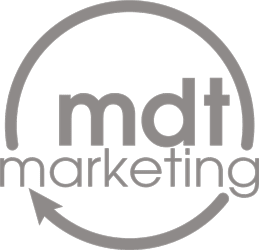The Power of Granularity in Google Ads: Greater Control, Better ROI
Most companies have some idea of how to attract new business through Google Ads, but lack the skills to create an effective ad campaign. They have too many questions about where to begin.
What metrics determine how efficient a campaign is? How much money should be allocated to a specific campaign and how long should it run? What works well in my area?
These are all questions that a Google Ads strategy helps to sort out. This instructional video outlines the steps for using granularity in Google Ads, by using a step-by-step approach.
Granularity assigns meaning to the various metrics and adds details to your campaign. Because of this, it helps funnel money to efficient areas and away from inefficient areas. It provides flexibility through levers of control that are built into each campaign. This keeps the budget aligned with the primary goals.
Granularity in Google Ads makes a big return on investment (ROI) more likely. As a result, every online business will benefit from a sound strategy.
Granularity Values
- A focused approach to data analysis/campaign management
- Increased flexibility and control
- Improved budget management
Granularity with Google Ads provides a fuller picture of the overall marketing strategy. In higher education, the goal is to convert clicks to starts and enrollments. The clicks themselves are one piece of the puzzle, as are the keyword optimizations, but the enrollments are the payoff. Also, the more detail a campaign has, the easier it is to adjust each piece for greater effect.
Whatever the industry, the ROI is everyone’s top priority. Google Ads is the best way to get there, and granularity is the strategy.
The next step is to put some order into your Google Ads business plan.
Impact Optimizations
First, begin your campaign with the most important thing. Where should the greatest amount of effort (spending) be concentrated? In order to figure your greatest metric, you need to weight them and assign value to each. Then, you can use a scoring system 1 to 10 (or maybe 1 to 5) depending on how many there are. Here is a sample from the education sector.
Education Metrics
- Enrollment
- Starts
- Applications
- Interviews
- Contacts
- Leads
The purpose of impact optimizations is efficiency. Find the most efficient and eliminate the inefficient.
Google Ads provides clarity at all levels. By drilling down into the campaign at every level, adjustments become easier to make.
Efficiency Measures
Second, after working through the impact optimizations, evaluate the spend at all 3 levels — Campaign, Ad Group, and Keyword. This is where the weighted metrics should be your guide. Make sure the money spent is bringing in return. Where there’s no return, shift the resources to a more effective outlet. Those inefficient ads that don’t produce are cannibals. They eat up precious resources that are better used in other ways.
Cannibals
- Campaign Level — high spend, low conversions/high cost-per-conversion
- Ad Group Level — high spend low conversion/low impression count
- Ad Level — high spend low click through rate/no conversions
- Keyword level — high spend, no conversion
Control and Flexibility Levers
Third, establish some levers of control.
This allows your campaigns to be more responsive and self-correcting. Granularity makes it possible to built-in control levers and make adjustments through the process.
Let’s run through an example:
Your institution is looking to run a campaign based on a certain radius around a particular campus. Most marketers make the mistake of setting up one campaign to fulfill this initiative. This offers little, to no, room for adjustments and none on a granular level. Get granular by splitting this campaign into three separate campaigns to give yourself three levers to control.
Lever/Campaign #1: Target 0–20 miles around the campus — $300 budget
- Statistics show that the closer a prospective student is to a campus, the more likely they will convert.
Lever/Campaign #2: Target 0–50 miles around the campus with a -90% bid adjustment — $300 budget
- The bid adjustment ultimately brings the radius to 21–50, eliminating the overlap.
Lever/Campaign #3: Target 0–75 miles around the campus with a -90% bid adjustment — $150 budget
- Those prospective students further from the campus are less likely to convert, so the budget is set at half that of the closer radius and again the bid adjustment makes the area 51–75.
This process has immediately created control and flexibility. As the data builds, the levers can be adjusted to move budget and radius to those campaigns meeting your goals.
Auditing Your Google Ads
A granular Google Ads strategy is the perfect way to manage the budget by shifting resources away from inefficient metrics. Not all accounts will allow for the same visibility. But, you should always begin by keeping the ROI at the forefront and work backwards. If you start there, efficiency and budget management will fall more easily in line.
Using Google Ads for high-intent inquiries is smart. But, without the right plan for spending, it can put a hole in your marketing budget.
If your cost-per-inquiry is increasing, and your conversions are decreasing, then maybe it’s time for a digital audit. Having a professional review your work and clean up the inefficiencies is the first step toward better budgeting. Find out where improvements can be made in the higher education industry. Schedule your free digital audit today.
